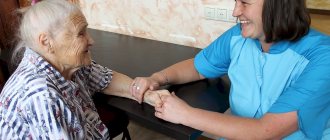Causes of tremor
Everyone is familiar with tremors in their hands, one way or another. Young people, when they are very worried, cannot cope with tremor of their fingers. Separately, we can talk about tremor in people suffering from alcohol addiction. Both reasons are temporary, and when you get rid of the source of worries and addictions, clarity of movements returns. But when it comes to neurological diseases, you cannot do without the help of a specialist and strong special medications.
Medicines aimed at treating tremor are, first of all, designed not to relax the arm muscles, but to free the patient from the cause that causes trembling of the limbs. If it is caused by nervous excitability, the medicine must be selected that can bring the nervous system into order.
There are a number of natural causes that cause hand tremors. These include:
- Multiple sclerosis, which occurs sooner or later in most older people.
- Progression of Parkinson's disease, in which shaking of the limbs can be observed not only during the day, but also at night during the patient's sleep. This disease is characterized by unilateral tremor: on the right or left side of the body.
- Increased attention and the need to perform precise, delicate work using fine motor skills. For example, while threading a sewing needle, your hands suddenly begin to tremble.
- Some thyroid diseases lead to hormonal imbalance affecting metabolic processes in the body. As a result, thyrotoxicosis occurs - a phenomenon accompanied by tremor.
- Damage to the cerebellum, which can occur for various reasons, affects coordination of movements. With varying degrees of damage, both mild dizziness and tremors of the limbs may occur.
- Osteochondrosis, localized in the thoracic region and cervical vertebrae, is another cause of trembling in the hands.
- Alcoholism is a common cause of tremors in physically healthy people. Such trembling spreads not only to the hands, but also to the head, lips and leg muscles.
- Diabetes mellitus is another source of spontaneous shaking. It appears when blood sugar levels drop.
On the psychological side, we can distinguish those that cause tremor:
- Emotional overstrain against the backdrop of vivid experiences. Most often found in schoolchildren and students taking exams.
- Exhaustion of the body as a result of strict diets with simultaneous heavy physical activity.
- A sharp change in lifestyle. This may include a change of team, type of activity, divorce, relocation.
Each condition has its own method of drug treatment.
Constant hand tremors: causes
Hand tremors can occur for a number of different reasons. Accentuated tremor of the upper extremities develops against the background of anxiety, fatigue, hypothermia, hypoglycemia, alcohol intoxication, thyrotoxicosis, poisoning with mercury salts, lead, arsenic, carbon monoxide. Also, this type of tremor develops when certain medications are taken incorrectly.
Essential tremor is presented in the form of postural and kinetic vibrations. As a rule, such vibrations are bilateral in nature, but asymmetrical tremors can also occur. This type of pathology is hereditary. In most cases, tremor occurs not only in the upper, but also in the lower extremities, as well as in the entire torso, head, lips, and vocal cords. Often, trembling is accompanied by a mild degree of torticollis, as well as a writing disorder. This phenomenon is observed in 25% of cases of essential tremor.
Parkinsonian hand tremor is a shaking of the limbs at rest that decreases with movement and increases with inactivity and distraction. A similar symptom is diagnosed in most cases with Parkinson's disease, but can also be observed in other pathologies, for example, with multiple system atrophy. Trembling occurs in the hands, less often the legs, head, lips, and chin are involved.
Cerebellar tremor is presented in the form of intention tremor. But in some cases, against the background of a disease such as multiple sclerosis, postural slow tremors also appear, involving the torso and head.
Dystonic tremor is diagnosed in people with generalized and focal dystonia and presents as an asymmetric focal tremor. Quite often it occurs with muscle spasms.
Rubral hand tremor is a postural and kinetic tremor combined with a resting tremor. This phenomenon occurs with lesions of the midbrain.
Neuropathic hand tremor is a postural-kinetic trembling of the upper extremities that occurs as a result of chronic demyelinating polyradiculoneuropathy and polyneuropathy.
Doctors select medications against hand tremor depending on the nature of the underlying ailment that caused the tremors of the upper extremities.
Neurologists, psychologists and other specialists at the Yusupov Hospital select tablets for hand tremors individually for each of their patients after carrying out a number of necessary diagnostic procedures.
Diagnosis of tremor
To make an accurate diagnosis, you will need to undergo a series of examinations. The process is easily accelerated if the patient guesses what exactly triggered the disease, for example, when he admits to alcohol abuse or long-term smoking.
Otherwise, blood tests describing the state of the endocrine system, CT and MRI of the brain, examination by a neurologist, and even a conversation with a psychiatrist may be prescribed.
Genetic testing may be performed to identify a hereditary predisposition to limb tremors. In this case, only symptomatic therapy will help.
Causes of tremor
Before we figure out how to get rid of shaking after a binge, let's look at why it occurs in the first place. It's all about increased activity of the autonomic nervous system after a sharp cessation of alcohol.
Alcohol is a positive allosteric modulator of GABA-A, a strong depressant. Gamma-aminobutyric acid inhibits the work of neurotransmitters in the central nervous system, while glutamate, on the contrary, stimulates it. With regular consumption of ethanol, depression of the central nervous system develops. Then glutamate activity decreases and neurotransmission increases.
If a person who abuses alcohol suddenly goes into overdrive, an imbalance of neurotransmitters appears, as the activity of GABA is inhibited. As a result, pronounced psychomotor agitation and hyperactivity of the autonomic nervous system occur. The main manifestation of this disorder is tremor after binge drinking.
List of drugs for hand tremors
Neurologists divide medications that can relieve uncontrollable tremors in the limbs into several groups:
- Anticonvulsants that inhibit nervous system processes.
- Inhibitors that weaken nerve impulses.
- Antidepressants that restore emotional background.
- Nootropics that provide active blood circulation in the brain.
You can get rid of tremors on your own only in cases where the tremors are caused by stress, anxiety or a bad habit. In all other cases, it will be possible to get rid of the problem only after consultation with a qualified specialist.
Antidepressants for anxiety-induced tremors
The advisability of taking antidepressants should be determined by a doctor for each individual patient. Antidepressants can be used in people with chronic alcoholism to relieve withdrawal symptoms, which are characterized by severe hand tremors. Also, while taking antidepressants, it is easier to survive difficult life moments. However, self-administration is fraught with serious consequences, since antidepressants affect the production and preservation of neurotransmitters.
Antidepressants as a treatment for tremors
Antidepressants are strictly prescription drugs. Uncontrolled use can cause a number of other problems, so it is important not only to get a prescription for the drug, but also to regularly visit your doctor to assess the dynamics of the condition and its control.
Such medications are used when a person has experienced an irreparable event that has greatly changed their life. Often the mental state is disturbed after the death of someone close, revealed betrayal, or as a result of loss of housing. Emotional people find it difficult to cope with stress, which is why they develop various mental disorders due to their experiences. Antidepressants help a person cope with stress and restore a normal lifestyle. Often these medications are taken simultaneously with a visit to a psychotherapist.
Conventionally, all antidepressants can be divided into two groups:
- Medicines that help cope with hyperactivity, normalize sleep and relieve obsessive anxiety.
- Medicines that help get rid of apathy and restore interest in life.
Due to the fact that hand tremors are predominantly a problem of high excitability and nervous condition, medications from the first group of antidepressants are most often prescribed to get rid of it.
How to relieve tremors after heavy drinking
The main goal of treatment is to minimize the severity of symptoms in order to prevent more severe manifestations of withdrawal symptoms: seizures, delirium and death. Effective treatment is aimed at increasing the patient's motivation to continue abstinence from ethanol.
Non-drug treatment
To relieve shaking after binge drinking, it is recommended to minimize the influence of stress factors on the patient - bright light, noise or other irritants. Maintenance therapy should be aimed at preventing dehydration, low blood sugar and water-salt imbalance.
If tremors after binge drinking are part of Gaye-Wernicke syndrome, supplementation with thiamine and B vitamins (including folic acid) quickly improves the condition of patients. Thiamine should be given before any glucose drip as it hastens the onset of Wernicke's encephalopathy.
Except in patients with cardiac arrhythmia, electrolyte imbalances should not be treated with magnesium supplements as there is no evidence of effectiveness. They are also not effective in preventing or treating limb tremors.
Pharmacological drugs
Patients suffering from mild to moderate alcohol tremors can be treated with medications on an outpatient basis, while more severe forms can be monitored and treated in an inpatient setting.
Benzodiazepines
Benzodiazepines are the “gold standard” in the treatment of shaking after alcohol, which has proven clinical effectiveness. Benzodiazepines stimulate GABA-A receptors, which reduces the excitability of muscle and nerve fibers.
No studies have shown clear superiority of any benzodiazepine over another. Stronger evidence exists for long-acting agents (chlordiazepoxide and diazepam), given their ability to alleviate withdrawal symptoms due to their longer half-life. If your hands shake severely and for a long time after heavy drinking, diazepam is most often prescribed.
Alpha-2 agonists and beta blockers
Beta blockers (propanol, atenolol) soften tremor, tachycardia and arterial hypertension. Medicines should only be taken in combination with benzodiazepines. Parenteral administration of clonidine (alpha-2 agonist) reduces tachycardia and arterial hypertension, but does not affect the intensity of limb trembling.
The use of beta blockers and alpha-2 agonists separately from benzodiazepines is not recommended as monotherapy is associated with increased mortality and higher complication rates.
Tremor, or why your hands shake
Volkov Alexander Viktorovich Psychiatrist,
More about the doctor
Tremor is a shaking of the limbs or the whole body caused by physiological or pathological reasons. In elderly and senile people, tremor occurs more often than in other age categories, and can be either an excessive reaction of an impressionable body to an irritant or a symptom of some dangerous diseases. Frequent manifestations of tremors in an elderly person is a reason to contact a neurologist as soon as possible, get tested and have a computed tomography scan of the brain.
Physiological tremor, reasons for its occurrence
Absolutely everyone experiences physiological tremor at It can be caused by strong feelings before public speaking, a feeling of cold, emotional stress (joyful or negative), etc. Also, trembling of the limbs may be accompanied by taking certain medications and alcoholic beverages. Physiological tremor occurs with prolonged static muscle tension (carrying heavy things, uncomfortable posture in transport). However, the main difference between this type of tremor and pathological one is that it goes away almost immediately after the stimulus is eliminated. Changing posture and stabilizing the psychological state lead to the elimination of trembling.
Pathological tremor, its etiology
Pathological tremor is caused by the influence of any disease on the central and peripheral nervous system and manifests itself even at rest. The onset of tremor does not depend on the patient's mood, but may intensify during times of stress or excitement. Most often, pathological tremor is caused by the following diseases:
- Parkinson's disease;
- atherosclerosis in the final stages;
- Minor's disease;
- thyroid disease, hormone imbalance;
- psychical deviations;
- brain injuries, post-traumatic disorders;
- alcoholism, drug addiction, poisoning or overdose of certain medications.
Diagnosis and treatment of different types of tremor
For older people, tremor is very typical, because... a decrease in the body's adaptive capabilities and a labile nervous system lead to frequent outbursts of emotions, both negative and positive. A decrease in muscle tone and muscle strength leads to the appearance of tension tremor.
It is very important to diagnose possible pathological tremor in the elderly in time, because it is caused by diseases that lead to death. Diagnostics includes consultation with a neurologist, neuropathologist, computed tomography of the brain or MRI. You may need the results of a biochemical blood test, fundus examination, and measurement of total arterial and intraocular pressure.
If the tremor is recognized as pathological, the specialist prescribes treatment for the underlying disease. Once the cause is eliminated, the trembling goes away. However, there are pathologies that cannot be completely cured (for example, Parkinson's disease). In this case, the doctor recommends taking medications that alleviate the patient’s tremor.
For any type of tremor, it is recommended to take sedatives and sedatives. If you have problems falling asleep and staying asleep, take sleeping pills. Taking medications containing magnesium and multivitamin complexes is also indicated. In difficult cases, antidepressants or nervous system inhibitors and anticonvulsants are prescribed. It is mandatory to give up bad habits. Self-medication for tremor is strictly prohibited; any drug should be prescribed only by the attending physician after a comprehensive examination of the patient!
Wearable anti-tremor device
It is extremely sad to see people whose hands shake uncontrollably due to Parkinson's disease. Any action becomes difficult or even impossible for them, and a person who was recently fully able to work feels lost and helpless. It’s even worse to feel people’s reactions - from sympathetic to disgusted.
TremorFreeMe, a wearable device recently submitted to the Hackaday Prize, is designed to help people suffering from hand tremors.
This device tries to correct jitter by using mild electrical stimulation in response to the movement it senses using a built-in accelerometer. Inside, this device contains an ATMega328p microcontroller, as well as MPU6050 accelerometer and gyroscope chips mounted on a small printed circuit board.
The prototype so far is a 3D printed square box containing all the contents. This unprepossessing device, which is still being developed and tested, is already at this stage capable of reducing hand tremors by 85%.
The system uses an application and machine learning algorithms to monitor “tremor behavioral signatures” and changes that occur, while offering patients personalized tools to control tremor intensity. The application uses an algorithm for processing voice commands, which makes it much easier to use for people who are not good with their hands. All user hand tremor data is collected, analyzed and used to further refine the machine learning algorithm, allowing this wearable device to be personalized to each patient.
We've written several times about commercial products that serve much the same purpose, such as a spoon for Parkinson's patients developed by Liftware, now part of Google. A similar product called Smart SPOON and FORK was presented at CES 2021 by Gyenno Technologies. This is a spoon and fork set designed for people with hand tremors due to Parkinson's disease or other diseases. The company says its product allows people with these conditions to eat without the threat of losing food on the way to their mouths.
There is also a tremor compensation glove called the GyroGlove, developed by a company of the same name.
New device will help cope with tremors
Photo: PHOTOXPRESS
Tremor - shaking of body parts, especially hands - is a common manifestation of a person’s nervous condition. However, most often it is one of the main symptoms of Parkinson's disease.
It was precisely to make life easier for the latter that this device was created. Essentially, it is a glove. On the back of each there is a battery that controls the board and the gyroscope - it is this that counteracts the trembling of the limbs due to its constant rotation. This “antiphase” dampens from 80 to 90% of the tremor. At the same time, a person’s movements become smooth and measured (people who participated in control studies noted that they had the feeling that their hand was moving in viscous syrup or honey).
However, manufacturers believe that the glove will be useful not only for people with problems with Parkinson’s disease, but, for example, for surgeons who need precise movements during an operation.
The device was invented by 26-year-old student Fai Ong from the UK. One of the largest medical equipment manufacturing companies in London has seized on its development; in addition to doctors, it employs engineers and designers. The company stated that it plans to establish serial production and begin selling the device before the beginning of autumn 2021.
Photo: GLOBAL LOOK PRESS
Meanwhile, innovation became interested at the state level. The fact is that today the drugs used to treat Parkinson's disease are often effective only in the early stages and practically do not help patients with severe forms. Now they will also have the opportunity to perform usual actions, for example, cook or eat on their own.
Tremor is an involuntary shaking of the entire body or its individual parts. It can be a short-term condition in a healthy person (for example, with severe anxiety or fear), but can be a symptom of some diseases of the nervous system, including Parkinson's disease.
This disease usually develops after age 60, gradually, and tremor is usually the first sign, although sometimes there is little or no tremor. The disease is incurable, but modern medicine can significantly slow down its development, which is why if tremor appears, you should immediately consult a doctor.
MEANWHILE
Scientists have found the main cause of Parkinson's disease. As part of the study, scientists at University College London found that the death of synapses (connections between brain cells) is associated with the activity of certain proteins that do not work properly. They attack synapses and they die. As a result, Parkinson's disease develops. Therefore, if you influence these proteins (as experts call them “agents”), you can stop the development of the disease.
ALSO ON THE TOPIC:
Alzheimer's and Parkinson's diseases can now be identified by one picture
During the test, the patient is asked to draw an analogue clock in the traditional way and show the specific time on it. Depending on how distorted the clock is on the paper, doctors determine the direction and position of the hand that held the pen during the “art”. They also evaluate the distortion of the drawing. It turns out that this can be used to judge hidden cognitive problems (more details)
10 Signs of Impending Alzheimer's Disease
If you notice at least one of the following symptoms, consult a doctor immediately - in this case, it is better to be on the safe side. Let's hope this turns out to be a false alarm. And if dementia is detected early, development can be slowed down (further).









